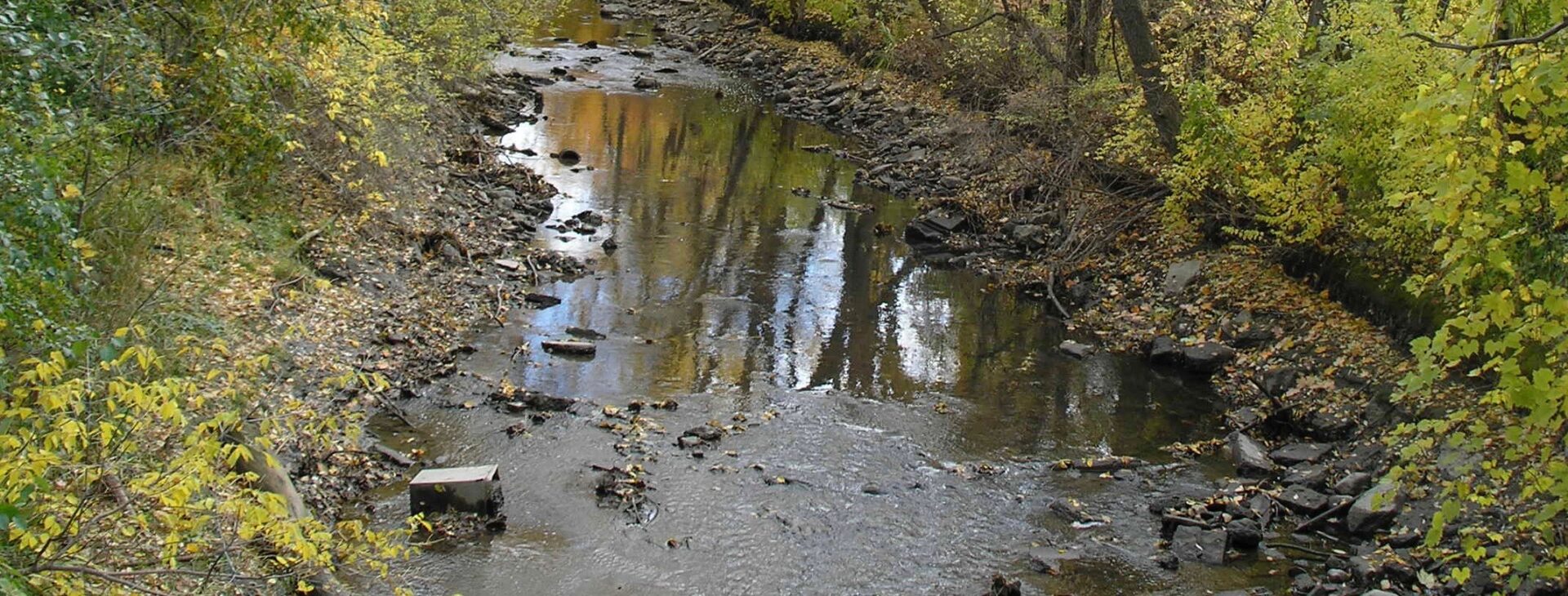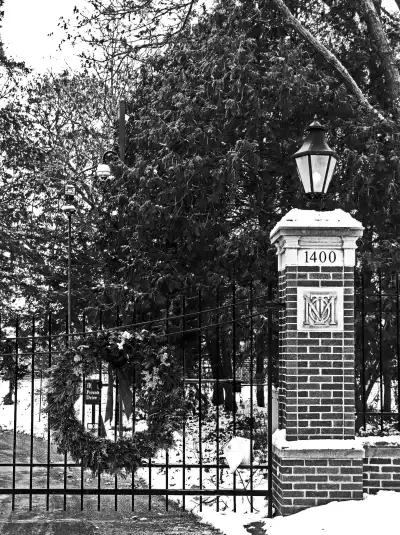by Harold C. Ford
Almost any day recently on a beat-up block of Copeman Boulevard in northwest Flint, beyond the cacophony of politics, lawsuits, economics, and science that is the Flint Water Crisis, you’ll find a gritty band of workers laboring to resolve a tragedy.
Some are guided, in part, by a sense of altruism. Some of them were discovered by a team of East Village Maazine staff during a recent visit on a hot, humid day to the construction sites, accompanied by an out-of-town film crew attempting to document a series of Flint stories.
And among those workers we encountered that day is Joe Parks.

Joe Parks (Photo by Edwin Custer)
Joe Parks is a Flint man. Born at St. Joseph Hospital, raised on Nebraska Street on the east side, and graduated from Flint Powers Catholic High School, he now finds himself at the core of the massive effort to replace an estimated total of 20,000 lead and galvanized service lines that carry tainted water to Flint homes in the next three years.
Parks is field manager for Flint-based Goyette Mechanical, one of a half-dozen companies and two labor unions awarded contracts by the Flint City Council in March of 2017 to repair Flint’s water infrastructure. The seven contracts total more than $35 million for replacement of 6,000 pipes and related work prior to the end of calendar year 2017.
“It’s a very special project,” Parks said of the campaign to replace Flint’s fouled pipes. “Any time we’re brought in for a project, we’re resolving somebody’s problem,” he said. “We get the opportunity to help every single time we go to work in the morning. There is a little extra icing on the cake as far as this one is concerned.”
Specifically, Goyette is responsible for the replacement work in four of ten demarcated zones within the city—Zones 2, 3, 6, and 8. Each zone has a foreman; they report to Parks. Copeman is in Zone 2.
“We all understand the reason that we’re here,” Parks said above the din of clanging shovels and clamorous heavy equipment. “This is a personal thing for us. We’ve got guys out here that are interested in more than coming to work in the morning and leaving at the end of the day. The majority of us here are Flint products.”
Parks has been employed by Goyette since 1998; he started as a truck driver. He worked seasonally during his high school and college years. Then he came on board as an assistant project manager and worked his way up to project manager.
“We’re here for a reason,” Parks said. “We’re really excited and we’re really proud to be a part of the team.”
Goyette’s team members also include subcontracted excavators from Roese Contracting Company that work closely with Goyette’s crews. Roese, headquartered in Kawkawlin, has five office locations in Michigan and several in other states. Roese has foremen in each of the construction zones with two field superintendents who oversee those zones.

Water pipe replacement bulldozers at work on Copeman Boulevard (Photo by Edwin Custer).
The task
The goal of government officials and construction crews is to complete a total of 6,000 line replacements in the city by November. “We (Goyette) are going to do 2,100 of these,” said Parks. “We typically do 20 in a day.” He said four crews, one in each of the four zones contracted to Goyette, complete five replacement projects in a day, sometimes less, sometimes more.
“We’re responsible for any piping from the main that is generally in the street…to the meter in the home that is not copper,” explained Parks. “If there is any material besides copper—generally it’s either lead or galvanized piping—we’re abandoning that and installing new copper piping, brass valves and fittings, and hooking up to a new meter or the existing meter.”
There is no cookie-cutter construction formula for the line replacements. “Every one of these projects are a little bit different,” Parks explained.
No x-ray vision
Accurate information about the water infrastructure dramatically hastens the work for Goyette and other companies. And accurate information has been provided primarily in the following ways:
- Data organization: As the water crisis unfolded, officials discovered they didn’t know where the lead service lines were. Information about the lines was scribbled onto 45,000 3-by-5 index cards stored in haphazard fashion at Flint’s city hall. Researchers from the University of Michigan-Flint organized the index card data into an imperfect but more easily understood digital data base. Nonetheless, data was still missing for 11,000 of Flint’s 56,000 parcels of land. Researchers then scanned 240 parcel maps from the city’s water department that contained information about service lines into a computer to provide a more complete picture for construction crews.
“There’s a lot of people on the ‘front end’ that are doing a lot of good work trying to make sure that they’re spending their resources in a manner so that we’re not wasting our time or the city’s money,” Parks said. “The city does have a good record of the newer areas where they know that there’s copper in the ground (and doesn’t need to be replaced). We stay away from those areas. However, this stuff is underground and we don’t have x-ray vision.”
- Canvassing: Without accurate data, Parks explained that a canvassing crew goes door-to-door. If the resident is cooperative, they’ll enter the home and see the pipe-fits coming into the home through the basement walls. “We’ll have a pretty good idea what’s going out to the street,” said Parks. “We can see whether there’s galvanized or copper piping or lead piping coming into their home. Based on that, we have a pretty good idea what’s in front of us.” Parks told EVM that pipes are replaced only for occupied homes with “active” water accounts. Information is provided to owners of vacant properties so that they can make the choice to get their water accounts “active” and qualify for pipe replacement.
“Ninety-nine percent of the time the residents are very accommodating,” Parks said. “It’s construction, so things don’t go exactly as planned at the time. For the most part, the residents are accepting of that. They’re letting us into their homes. The fact that we’re there doing this work, disrupting their day, making a lot of noise, sometimes a little dirty — they’ve been welcoming.”
- Suck it up: Minus accurate data or successful canvassing, the Roese crew will deploy their hydro excavation trucks that use pressurized water and industrial-strength vacuums to suck up dirt at the location of the valve (where piped water exits the main line in the street and is routed into the service line leading to the residence). “Anything in the ground from the street to the meter that is not copper, we’re replacing with copper,” Parks said. “It is “typical”, he added, that copper will be found from the valve to the home, but lead or galvanized pipe will be found from the valve outward to the main.

The all-important valve, the point at which water is routed from the main to the line that leads to the house (Photo by Edwin Custer )
Data, canvassing, and dirt-sucking, however, do not guarantee that excavation decisions are successful. Parks estimated that one in ten digs undertaken by Goyette and Roese crews are unnecessary and, thus, unsuccessful. That number is substantially less than the failure rate reported by the Flint Journal-MLive which used the Freedom of Information Act to discover that “252 of 1,155 excavations—22 percent—tied to the Flint water crisis have led to copper lines.”
Enough money
Parks explained construction may have been slowed by other factors but not by lack of funding. “Our schedule has not been impacted by funding,” he said. A court settlement approved by a federal judge in May 2017 ensures adequate funding for the replacement of Flint’s lead pipes through completion of the project in 2019. The citizen lawsuit was filed by the Concerned Pastors for Social Action, Melissa Mays, the Natural Resources Defense Council (NRDC), and the American Civil Liberties Union of Michigan.
According to the NRDC website, one part of the agreement requires the state “to provide $97 million to the City of Flint for replacement of lead and galvanized steel pipes at no cost to Flint residents; $47 million will come directly from Michigan state funding sources; and $50 million will come from federal and state funding directed to Flint by Congress.”
Contractors mostly “Flint-centric”
Pipe replacement work crews deployed in the city, in addition to Goyette, are mostly Flint-centric and include:
- WT Stevens Construction, Inc., a Flint-based, “minority, woman-owned company” responsible for up to 2,700 water line replacements in Zones 1, 3, 5, 7, and 9;
- Waldorf And Sons, Inc, a company based in Mt. Morris responsible for up to 600 water line replacements in Zone 4;
- Lang Construction, Inc, a Flint-based company responsible for up to 600 water line replacements in Zone 10; Zito Construction, a company located in Grand Blanc responsible for pavement/right-of-way repair restoration services after water service line repair for Zones 2, 4, 8, and 10.
- Yeager Asphalt, a company with offices in Flint, Bay City, Saginaw, and Midland, responsible for pavement/right-of-way repair restoration services after water service line repair for Zone 1.
- Flint AFSCME Locals 1600 and 1799, responsible for pavement/right-of-way repair restoration services after water service line repair for Zones 3, 5, 6, 7, and 9.
EVM staff writer Harold C. Ford can be reached at hcford1185@gmail.com. Jan Worth-Nelson, Ted Nelson, Aubrey McClain, and Edwin Custer participated in this report.







You must be logged in to post a comment.